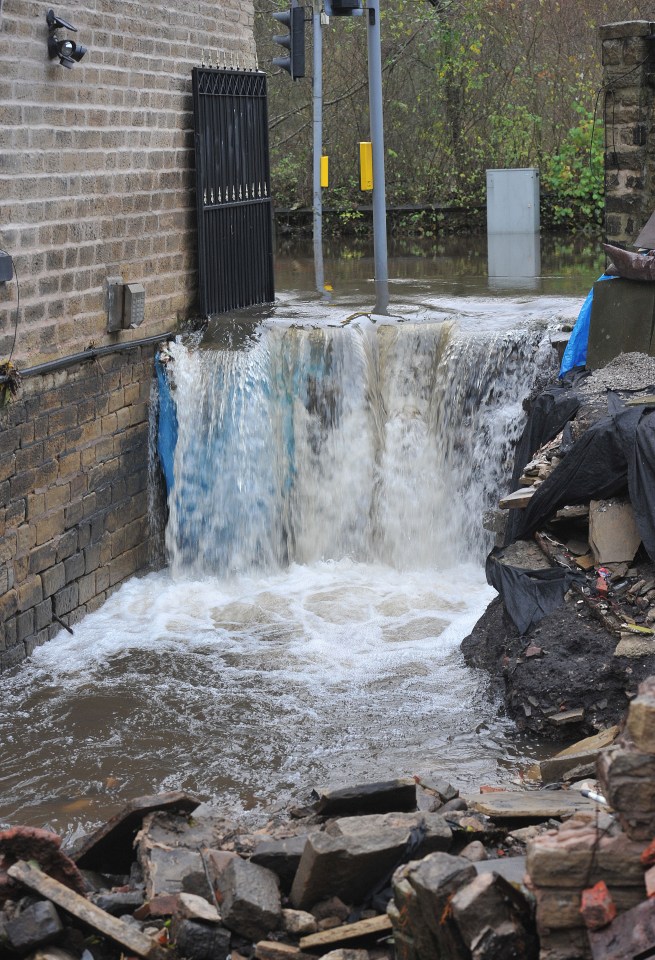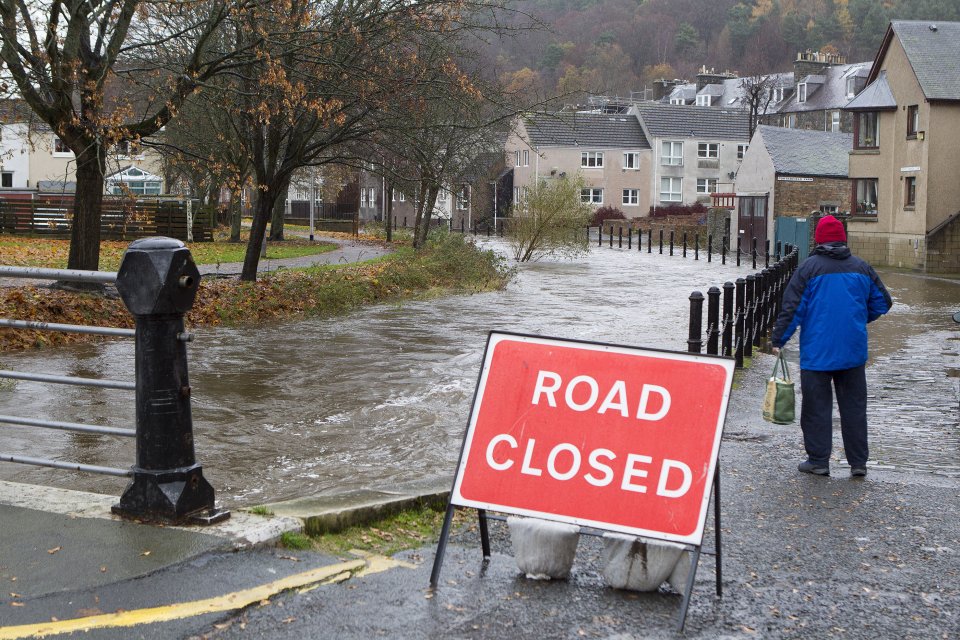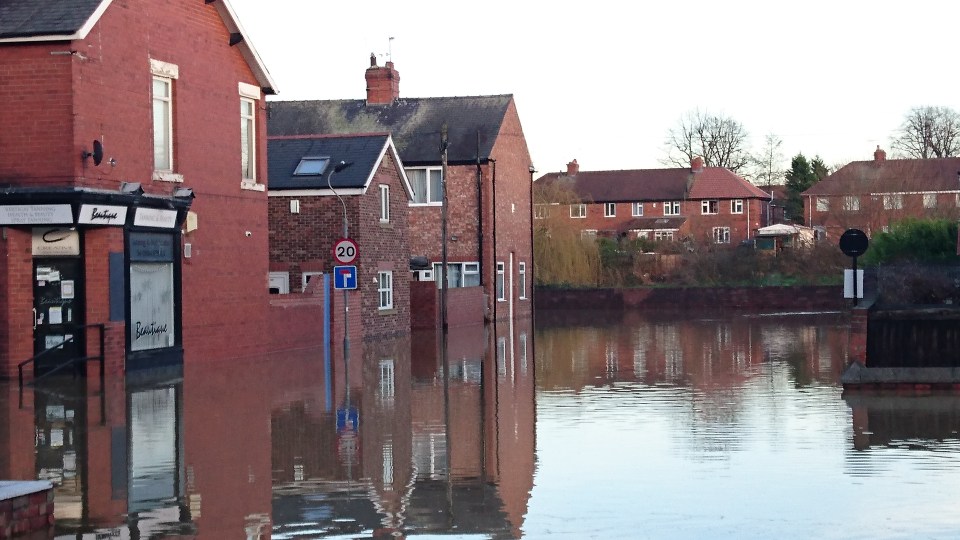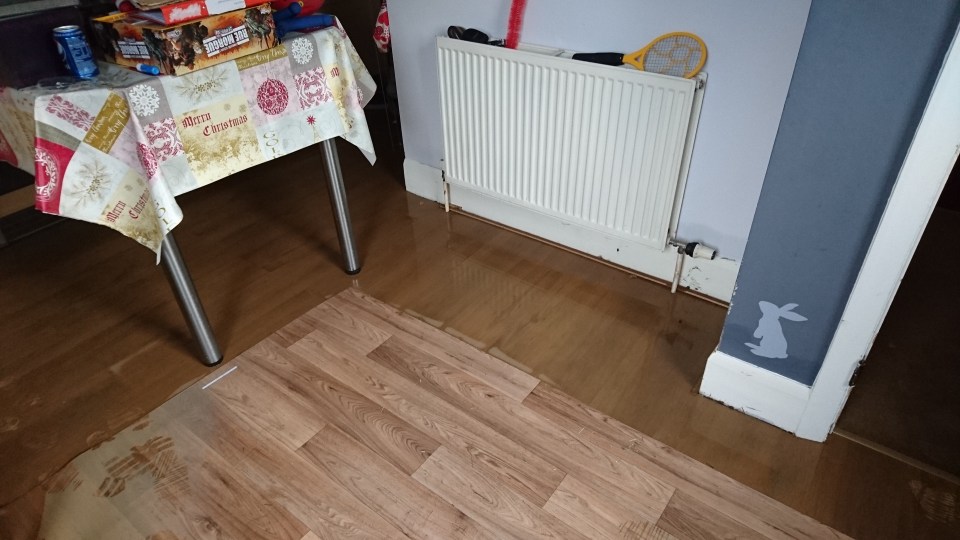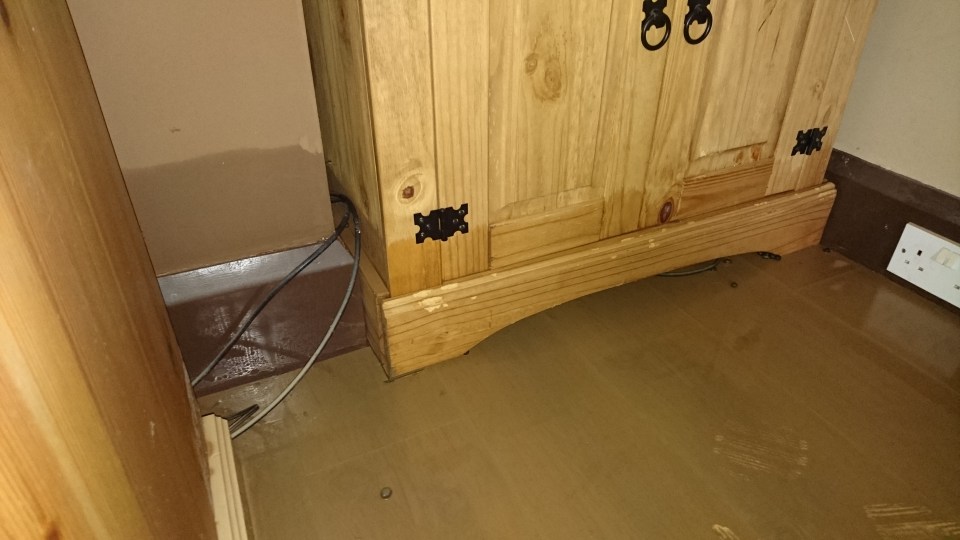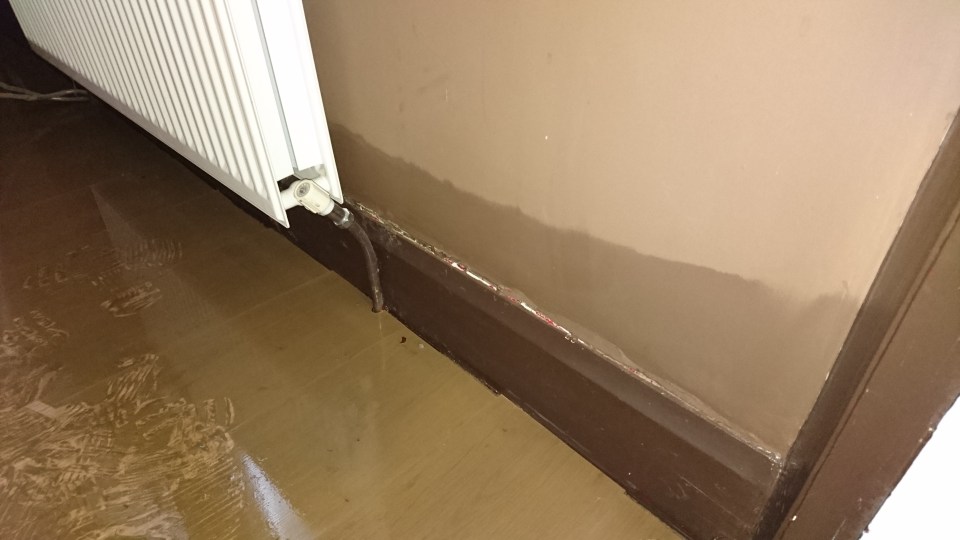How to protect your home when floods hit as vital insurance capping scheme protects homes
Homeowners whose properties have flooded are now able to have their insurers claim through the Flood Re scheme which means insurance costs are capped and their excess is limited

AS parts of the UK were battered by floods this week families across the country are preparing themselves for the chaos caused after their homes were damaged.
Britain was battered by a month's worth of rain on Tuesday - crippling roads and rail and sparking a major drama at sea.
The full extent of the damage is still being assessed and hundreds of families are coming to terms with damage that has been inflicted on their homes.
It is a scenario that 45-year-old Lynne O'Conner and husband Allister, 43, are far too familiar with.
Their home was ravaged by flooding on Boxing Day last year just as they were in the midst of Christmas celebrations.
It destroyed the ground floor of their home causing £10,000 worth of contents damage and potentially double that number or more to the building.
The couple, who live with their four pet rabbits, were forced to evacuate their home in the early hours of December 27 as floodwater was rising in their street and eventually the emergency services came to rescue residents by boat.
She told The Sun Online: "It had never been that bad before so we didn't worry initially but as it came around the corner of the street we began to think 'we're in trouble here'.
"Because we saw it coming early we had some time and started moving everything we could upstairs, with the exception of heavy furniture and things like that.
"It was worrying because we’d never been flooded before so didn’t know what to expect. The council brought round sandbags. At midnight on Boxing Day we went to bed as there was nothing more we could do, but at 2am we were woken up and told we had to evacuate. Some of our neighbours were evacuated by boat, but we were able to leave in our campervan."
Lynne and Allister spent the night sleeping on her mum's floor, before staying with friends and eventually being put up in a hotel by Halifax, who they were insured with, and then temporary rental accommodation.
It wasn't until May that they were finally allowed back into their home following extensive repairs, including to the electrics, plumbing, floors and walls.
Thankfully, the couple's home insurance covered the cost of items in their home as well as repairs that were needed.
Added protection in the form of Flood Re means that despite living in an area where the chance of flooding is high their premium costs have only risen by the cost of inflation and their excess for food damages has remained unchanged.
What to do if your home gets flooded
– Make sure you and your family get to safety if floodwater is rising quickly
– Move anything of value such as family heirlooms and photos either upstairs or to a higher part of your home or remove it from the property entirely
– Contact your insurer as soon as possible
– If necessary, arrange temporary emergency repairs to stop any damage getting worse. Tell your insurer and keep any receipts, as this will form part of your claim
– Do not be in a rush to throw away damaged items, unless they are a danger to health, as these may be able to be repaired or restored. Your insurer will advise
– Only return to your home or business after a flood when it is safe to do so
– It can take weeks – sometimes longer – for a property to fully dry out so do not be in a rush to redecorate. Your insurer can give you advice about this
– If your home is uninhabitable while repairs are being carried out, your insurer can arrange for and pay the cost of any alternative temporary accommodation you may need
– Commercial policies will cover damage to premises and the stock. Business interruption cover (which may be included or purchased separately) will cover additional trading costs, such as hiring temporary alternative trading premises if necessary
– Comprehensive motor insurance covers the cost of repairing or replacing vehicles damaged by flooding
Before this protection was created last year thousands of families faced extortionate costs as insurers were forced to hike premiums and excess fees.
The measures were introduced in April this year after years of negotiation between the government and Association of British Insurers (AB).
It means that a cap has been placed on how much insurers can charge for the flood element of home insurance, which is based on their Council Tax band.
There is also an excess limit of £250 per policy.
The added bonus is that those whose homes have been flooded don't need to do anything other than contact their insurer. They will handle the process, meaning there is no need to contact Flood Re directly.
Related stories
The scheme will be in place until 2039 to enable homeowners to find affordable insurance if an eligible property is at risk of flooding and to help rental tenants to find affordable contents insurance .
The O’Connors took advantage of the new Government Flood Protection Grant to protect their home from future floods.
The timber floor was replaced with concrete to reduce damage in the event of a future flood. The couple also had flood barriers fitted to help keep flood water out in future, and non-return valves to avoid contamination of water supplies should future flooding occur.
Lynne added: "We've just been given our renewal documents and the price has only gone up in line with inflation and there's no change in the excess. They sorted out everything with Flood Re in the background and if we ever get flooded again it is covered."
What is Flood Re?
According to the Association of British Insurers, the Flood Re scheme will be a not-for-profit flood reinsurance fund, owned and managed by the insurance industry, and established to ensure that those domestic properties in the UK at the highest risk of flooding can receive affordable cover for the flood element of their household property insurance.
Reinsurance is a way for insurers themselves to insure against large scale losses with other insurers. Insurers sell policies to their customers in the usual way, but then may pass the risk carried by those policies to a reinsurance company, or reinsurance vehicle – like Flood Re – where those risks are pooled into a fund which pays out to the insurer if claims are made.
The contractual responsibility for paying out to the customers if a claim is made still rests with the original insurer – but they have their own back up from the reinsurance pool which they can claim against. This helps insurers take on more risk as the consequences of large claims are more widely spread.
Insurers will sell insurance in the normal way, and have an incentive to compete for the business of customers with high flood risk because they know they can pass the flood component element of the policy into Flood Re.
The flood element of a home insurance policy will be placed in Flood Re, based on Council Tax band, and priced accordingly – from £210 for Band A homes to £540 for Band G homes. Insurers will use this facility for the 1 to 2 per cent highest risk homes – an estimated 350,000 homes – that would have struggled to find any affordable cover in a normal market.
If they are flooded those customers will deal with their insurer in the usual way to get their claim paid and Flood Re will reimburse the insurer behind the scenes for the cost of the claim.
The insurance industry is paying the £10m set up costs to get Flood Re up and running. The Flood Re pool itself has two sources of income. The first is the flood element of the policies which are passed into it. The second is an additional levy on the industry, equivalent to the existing cross-subsidy that exists in the market.
We pay for your stories! Do you have a story for The Sun Online news team? Email us at tips@the-sun.co.uk or call 0207 782 4368


